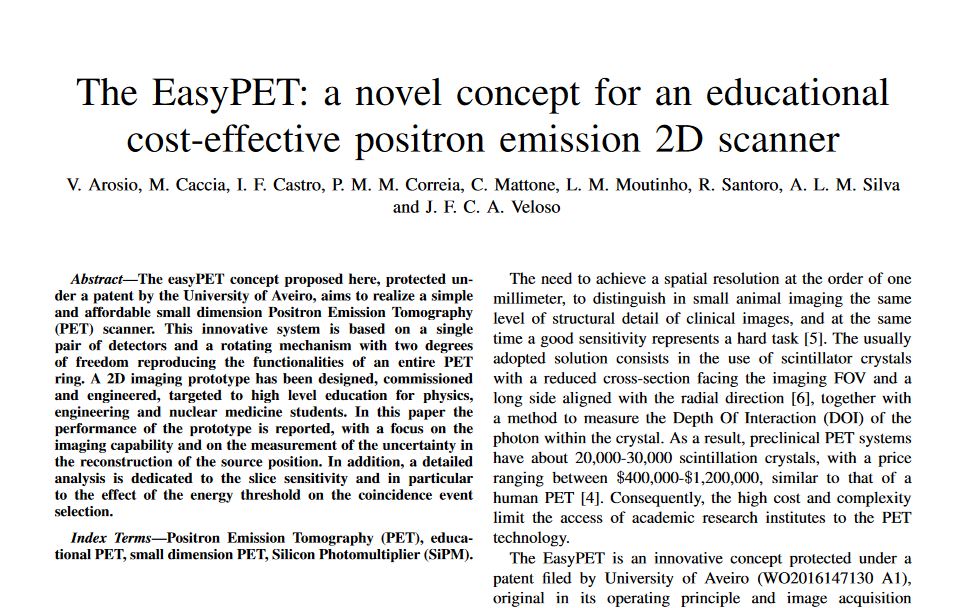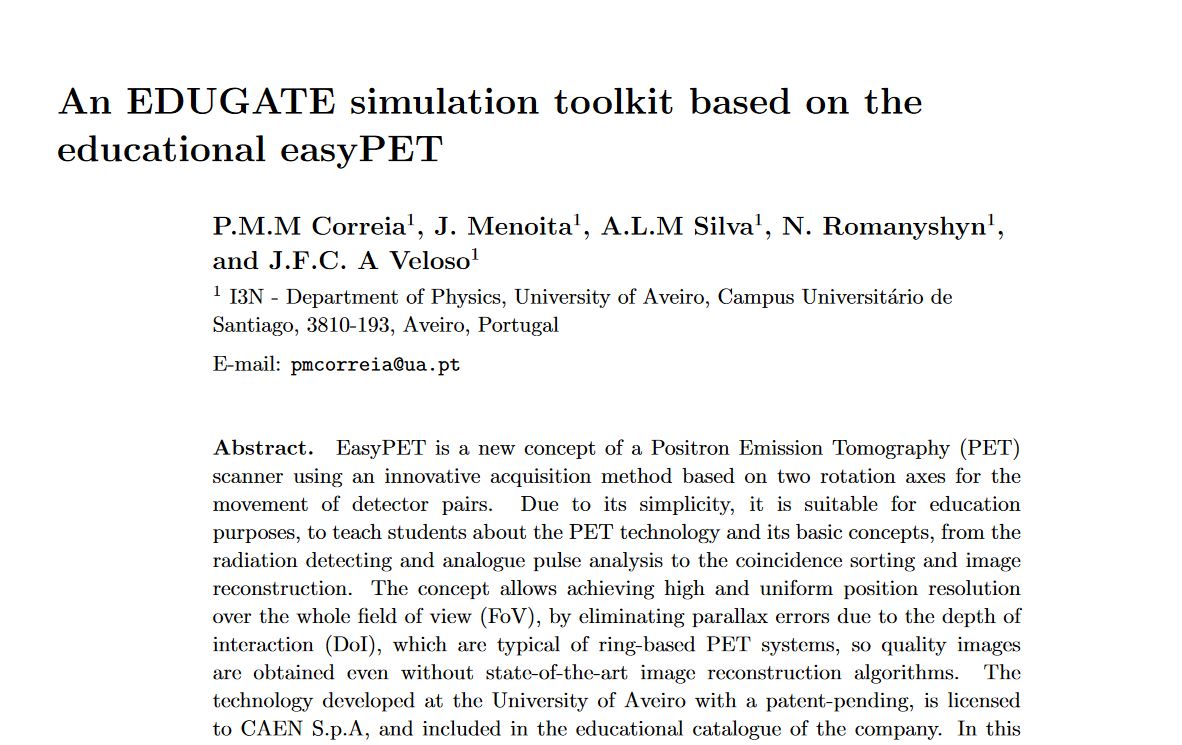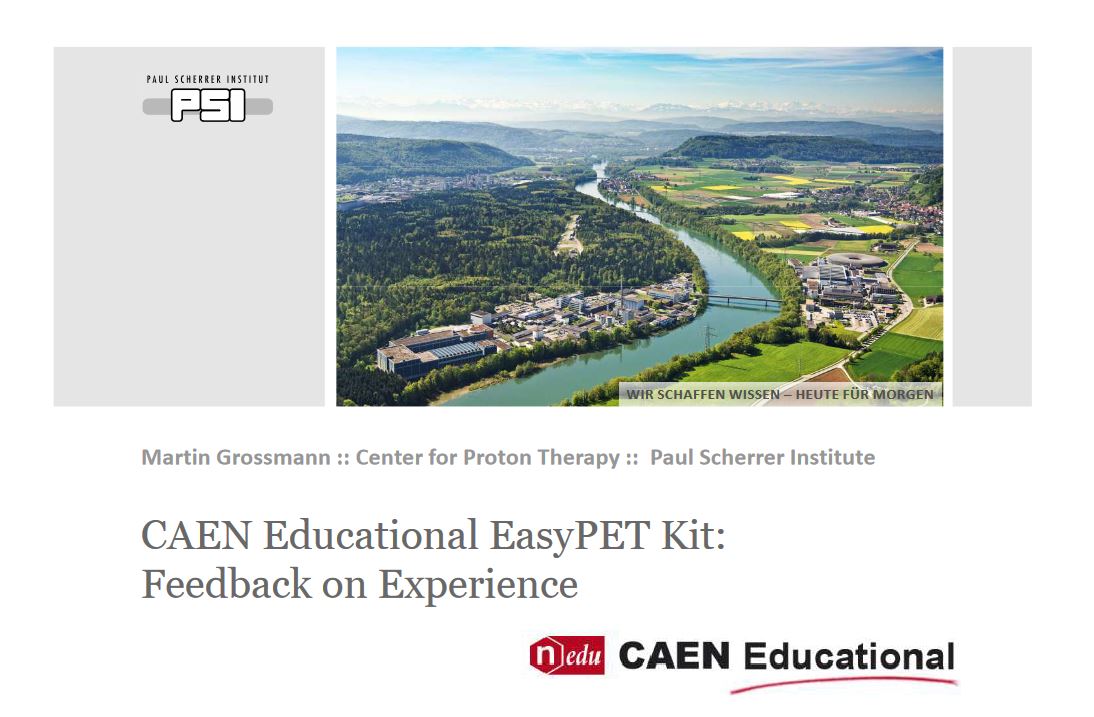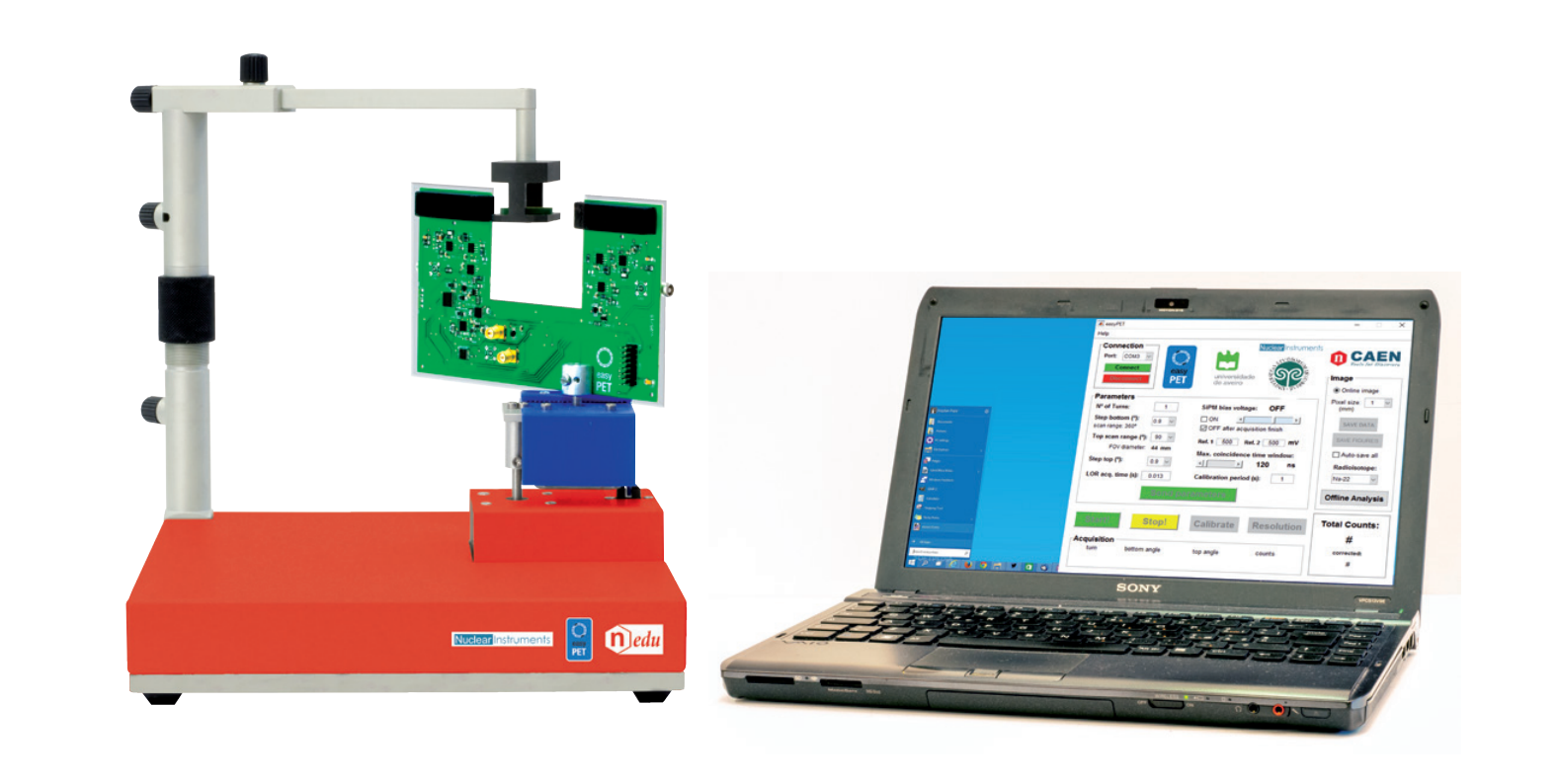The EasyPET: a novel concept for an educational cost-effective positron emission 2D scanner
The EasyPET concept proposed here, protected under a patent by the University of Aveiro, aims to realize a simple and affordable small dimension Positron Emission Tomography (PET) scanner. This innovative system is based on a single pair of detectors and a rotating mechanism with two degrees of freedom reproducing the functionalities of an entire PET ring. A 2D imaging prototype has been designed, commissioned and engineered, targeted to high level education for physics, engineering and nuclear medicine students. In this paper the performance of the prototype is reported, with a focus on the imaging capability and on the measurement of the uncertainty in the reconstruction of the source position. In addition, a detailed analysis is dedicated to the slice sensitivity and in particular to the effect of the energy threshold on the coincidence event selection.






